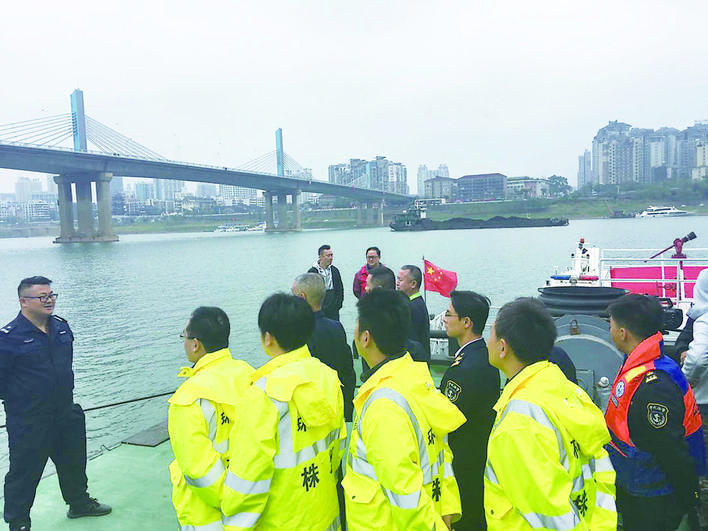Visit the Yuanlongshan Grottoes in the National Security Unit of Yuanshi County: quietly lying in Longshan Qianzhuo leisurely
Author:Shijiazhuang Daily client Time:2022.09.26
Fenglongshan was listed as a famous Hebei in the Tang Dynasty. The natural scenery is beautiful, with the gaps in the gap, Qingquan Bixi, and Qifeng strange stone. There are also bright historical and culture here, Hanbei, Academy, Grottoes, Taoist Views ... attracting many people to go to explore ancient searching.
In the autumn, we went to the mountains to visit Fenglongshan Grottoes. At the time of sun and twilight, the sun in the mountains is still bright, but it can no longer resist the coolness of the autumn wind. Although it has not yet reached the situation of "the boundless falling wood", the grass and trees are clearly distinguished. Fortunately, the clear sky that can be seen from the sight has reduced the loneliness of autumn. Walking in the mountains, things in the world are easy to be forgotten. I thought in my heart that I do n’t know who the ancients had gone through the same path. Through a long corridor, I came to the west stone hall of the mountainside, stood on the flat ground in front of the hall, and looked at the peaks in the distance, and the vision and mood suddenly opened up.
Fenglongshan Grottoes include Xishi Hall, Dongshitang, and Baxiantang, which are located on the south slope of Fenglong Mountain. Unfortunately, the Buddha statues in Dongshitang and Baxiantang no longer exist. Xitangtang is divided into grotto No. 1, No. 2, and No. 3 from west to east. Cave 1 is the third Buddha cave. The mouth of the cave is round arched. The inside of the cave is square, with a length and width of about 3 meters. There is a main Buddha in the left, right, and back walls in the cave, and there are more than ninety small Buddhas in large and small. The themes of small Buddhas are different, with various forms and their own style.
Cave No. 2 is a thousand Buddha cave. In the middle of the center is a center stone pillar, and a Buddha is carved on the column. The throne is engraved with a daughter -in -law and a daughter -in -law on three sides. The statue of the four walls in the cave is criss -crossed, and there are more than a thousand. Therefore, this cave is called "Thousand Buddha Caves". The form of relief statues is basically the same, but the gestures are different. Unfortunately, the heads of many statues are damaged, and most of them now see them later based on the style of the style. The top of the cave No. 2 was flat. At that time, the center Tomai painted the tangled lotus pattern with three colors of black, white, and 赭. Carefully identified it, and I could see the dark red flower pattern faintly.
Cave 3 is engraved with a residence of the lying Buddha. The Buddha statue head pillow the lotus pattern square pillow, put on the head with the right hand, put it on the left hand, the feet are together, the eyes are slightly fit, the expression is serene, the head is west and the east, and the side is lying on the stone platform. The facialness and feet of the lying Buddha are very delicate. The body only has a shade line, and a few marks are used to show the folds.
When did Xishitang excavate? The determination of time was completed by a person named Liu Qiuli "unintentional" in Beiqi. Three years (572 years) in Wuping of the Northern Qi Dynasty, Liu Qiuli arrived here, leaving 11 engraved words on the cliff on the east side of the grotto. This person is not famous, but these precious words confirm that the excavation age of Xishi Hall should be before 572 AD. Cultural relics experts judged based on the carving style that Cave 1 was completed in Northern Qi, and Cave 2 was completed in the Tang Dynasty. The completion of Cave 3 was controversial. Some people thought that in the Song Dynasty, some people thought it was the Ming Dynasty.
Earlier in the rejection of Fenglong Shanxi Grottoes, it was a more important grotto in Hebei Province. It was a valuable heritage of the art of grottoes in my country. It was also an important information about studying the art of stone carvings in the Northern Dynasties and even the Tang and Song dynasties. Several times in history and the destruction of different degrees later, the destruction of the Longshan Cave was severely damaged, but the cultural relics that were protected still retained its unique charm. As a statue of the Buddhist Grottoes, Fenglongshan Grottoes were rated as the seventh batch of national cultural relics protection units in 2013.
Go out of the grotto, look back again, the smile in the corner of the mouth of the big Buddha, the expression in the eyebrows, the serene posture, the 璎 璎, the lotus under the seat ... slowly emerge, the silence in the mountains, it seems that only the time passes through the time passing by and passing by. The sound.
Source: Shijiazhuang Daily Client
Reporter: Liu Di
- END -
Fixed alarm clock!Tonight at 8 o'clock "Huimou Hubei" consumer voucher opened

2022 Huimou HubeiThe second round of the second batch of consumer couponsIt will b...
28 units guard the water to protect the people's happiness river

Zhuzhou Daily All Media Reporter/Yu Qiangnian Correspondent/Chen Xiang Hubei Liu R...